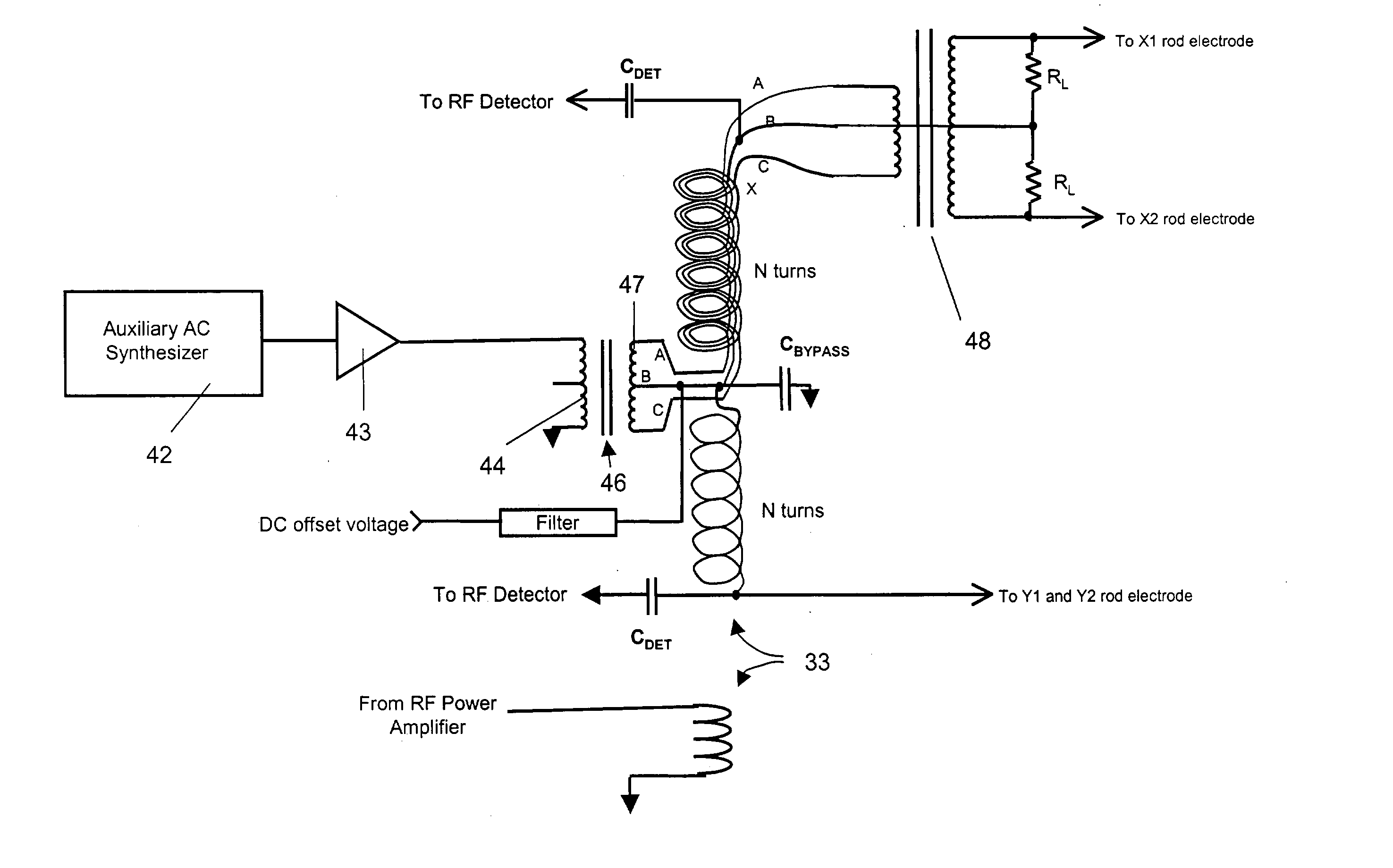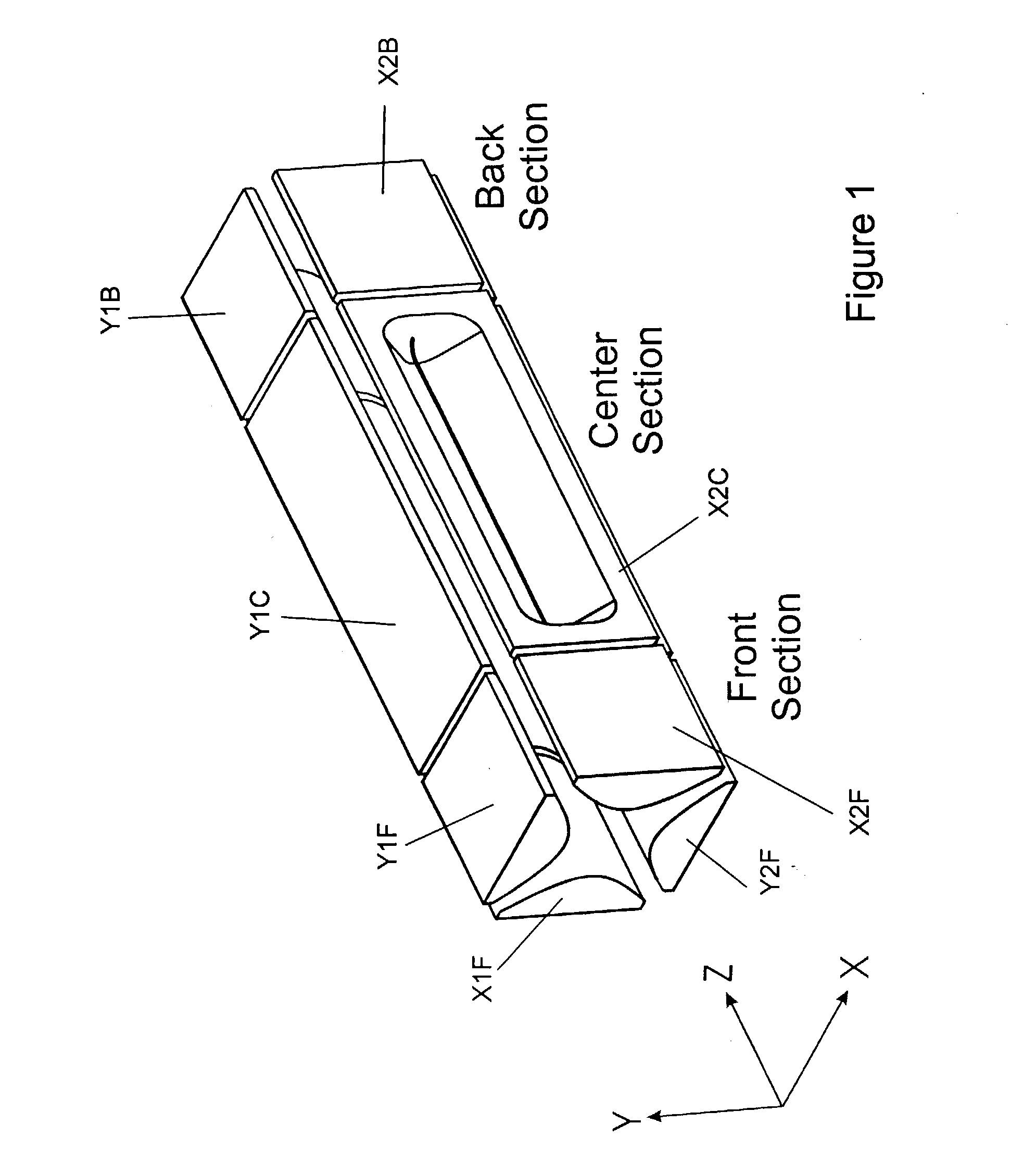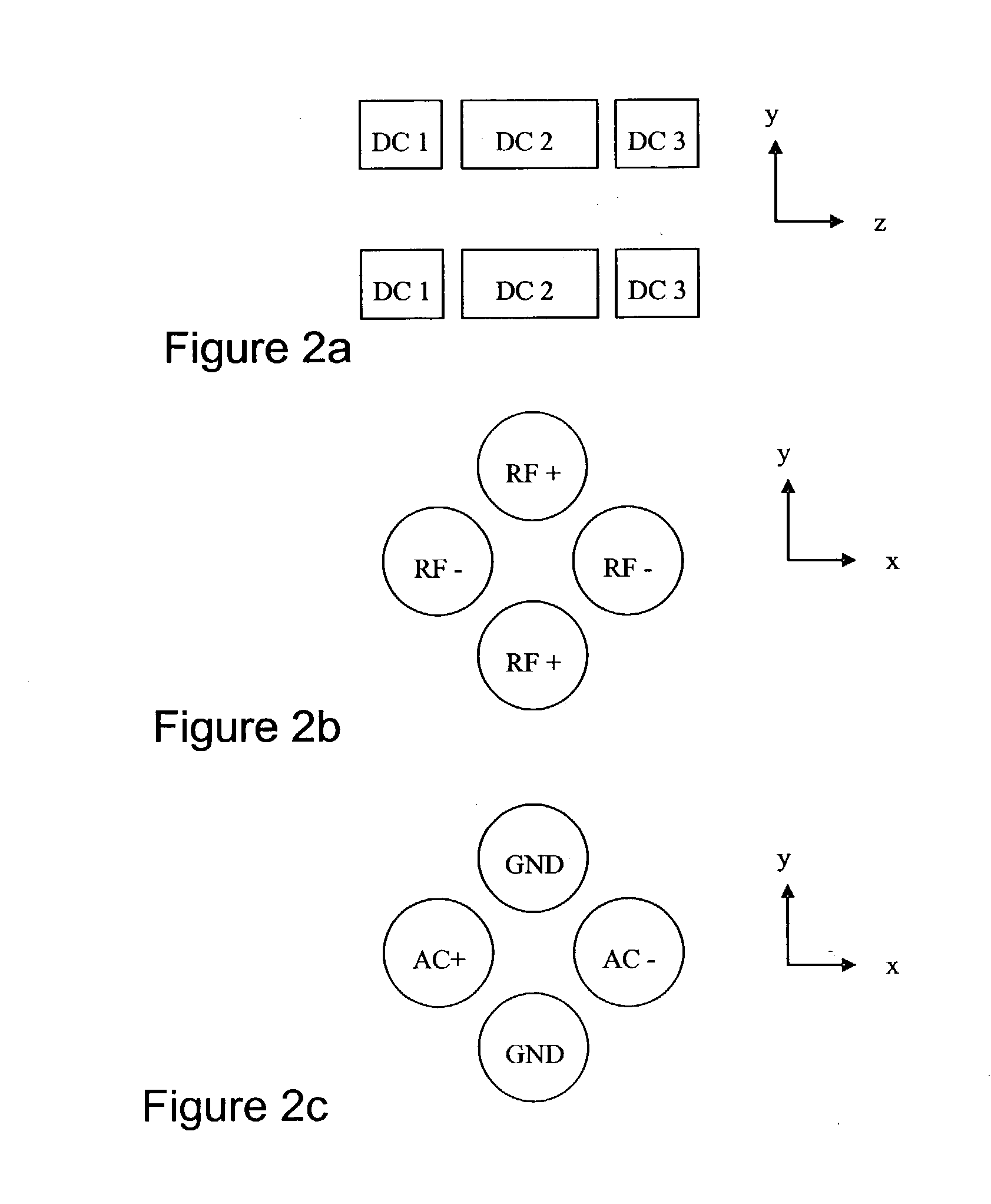Circuit for applying suplementary voltages to RF multipole devices
a multi-pole device and circuit technology, applied in the direction of particle separator tube details, separation processes, instruments, etc., can solve the problems of affecting the injection, complicating the design of such a device, and requiring a much larger and substantially more expensive ac transformer design, so as to achieve the effect of minimizing the axis potential
- Summary
- Abstract
- Description
- Claims
- Application Information
AI Technical Summary
Benefits of technology
Problems solved by technology
Method used
Image
Examples
Embodiment Construction
[0033] A brief discussion of the design and construction of RF tuned transformers 23 is helpful in the understanding of the present invention. The reason that such devices are used is that it is possible to generate high RF voltages in the frequency range needed for RF quadrupole / multipole devices with relatively modest amounts of RF power. The secondary winding of the transformer is, in essence, a very large air cored solenoidal inductor. The connection of the secondary winding to the rod electrodes puts an almost purely capacitive reactance across this inductor creating an LC resonant circuit. Since there is essentially no resistive component to this load the only source of damping is the resistance of the wire in the coil windings and resistive losses associated with induced currents in the circuit enclosure. Hence this LC circuit has a very high quality factor, Q, and a correspondingly narrow resonant bandwidth. A basic characteristic of such circuits is that if you drive them w...
PUM
 Login to View More
Login to View More Abstract
Description
Claims
Application Information
 Login to View More
Login to View More - R&D
- Intellectual Property
- Life Sciences
- Materials
- Tech Scout
- Unparalleled Data Quality
- Higher Quality Content
- 60% Fewer Hallucinations
Browse by: Latest US Patents, China's latest patents, Technical Efficacy Thesaurus, Application Domain, Technology Topic, Popular Technical Reports.
© 2025 PatSnap. All rights reserved.Legal|Privacy policy|Modern Slavery Act Transparency Statement|Sitemap|About US| Contact US: help@patsnap.com



